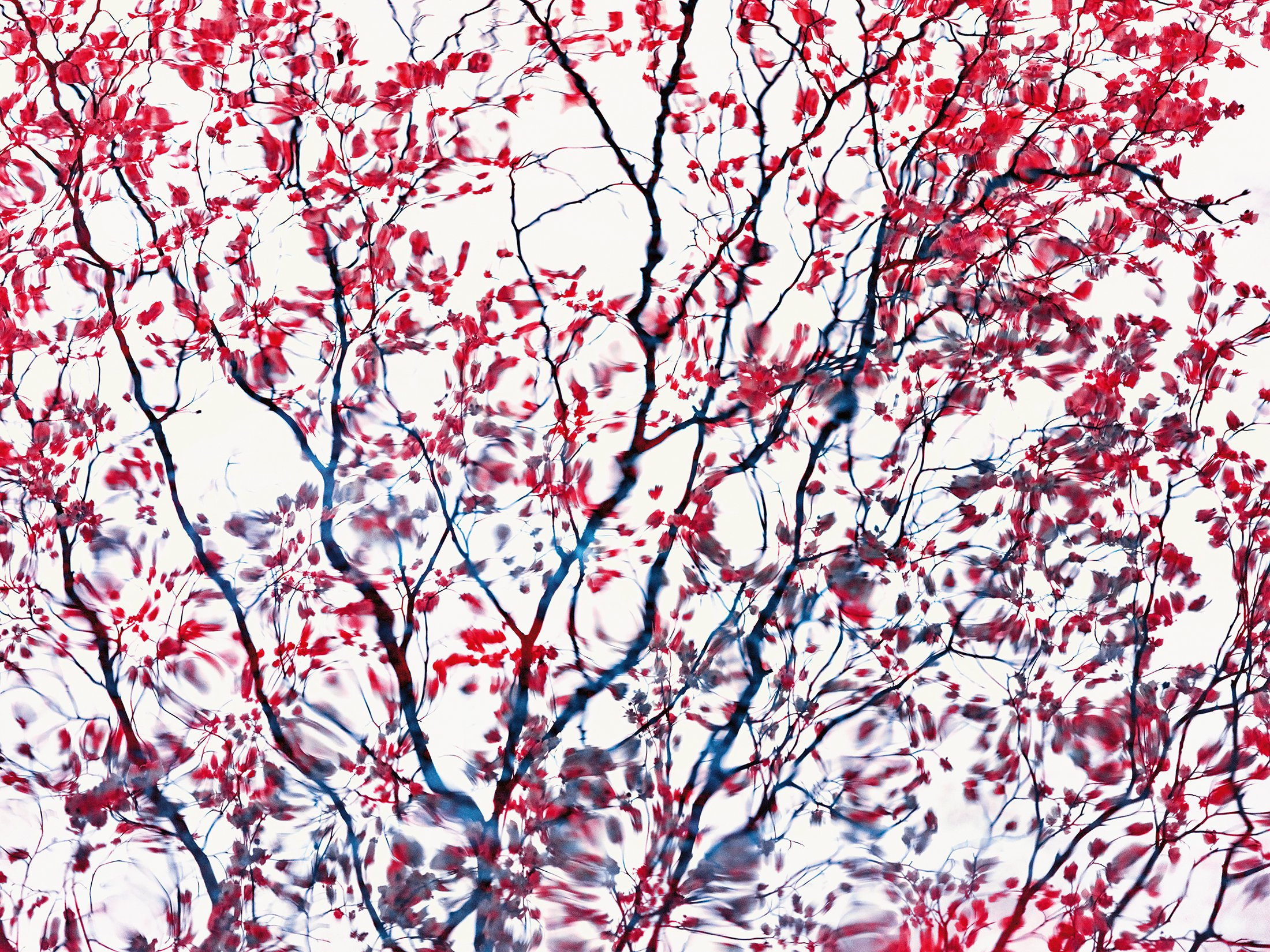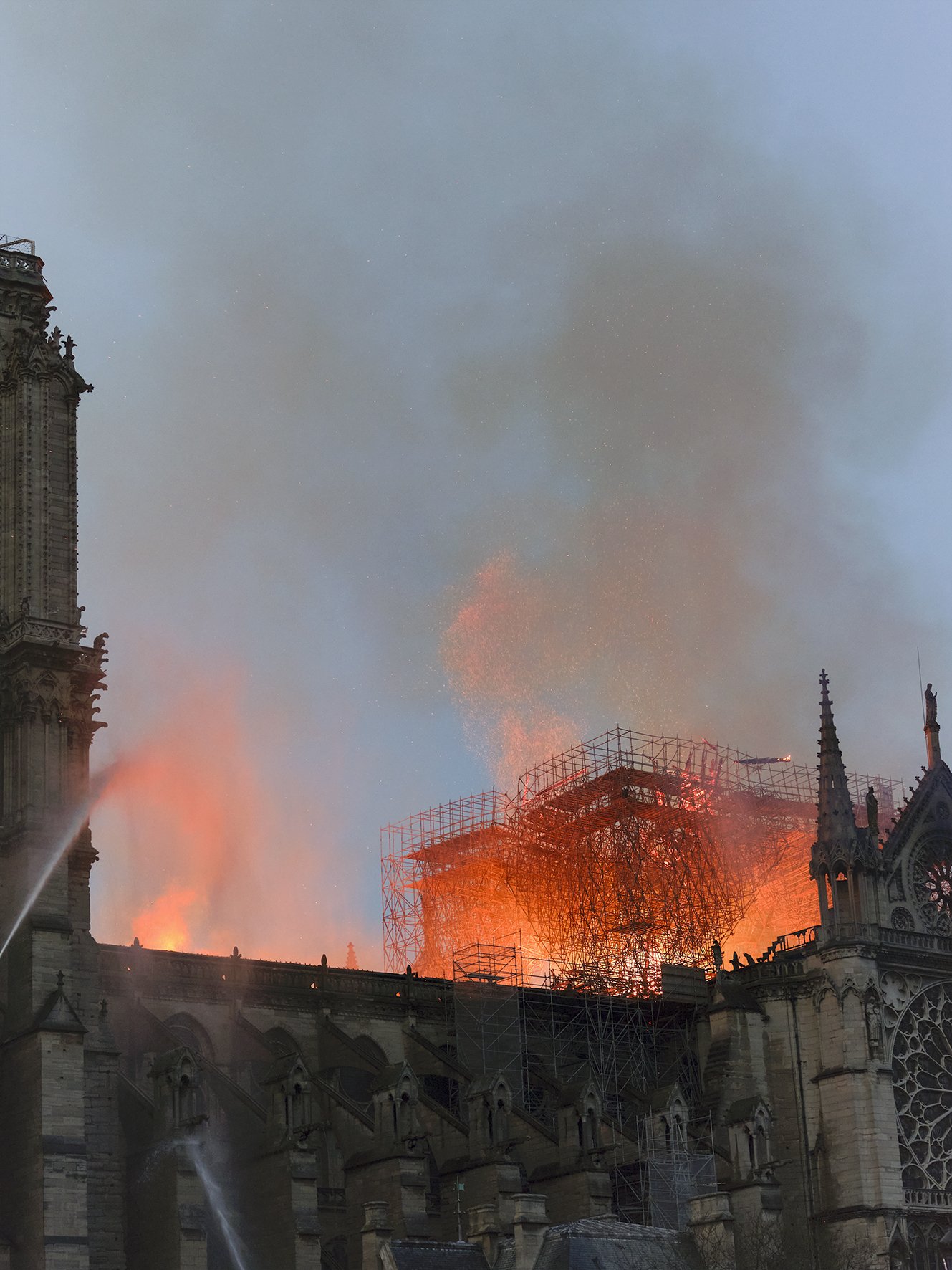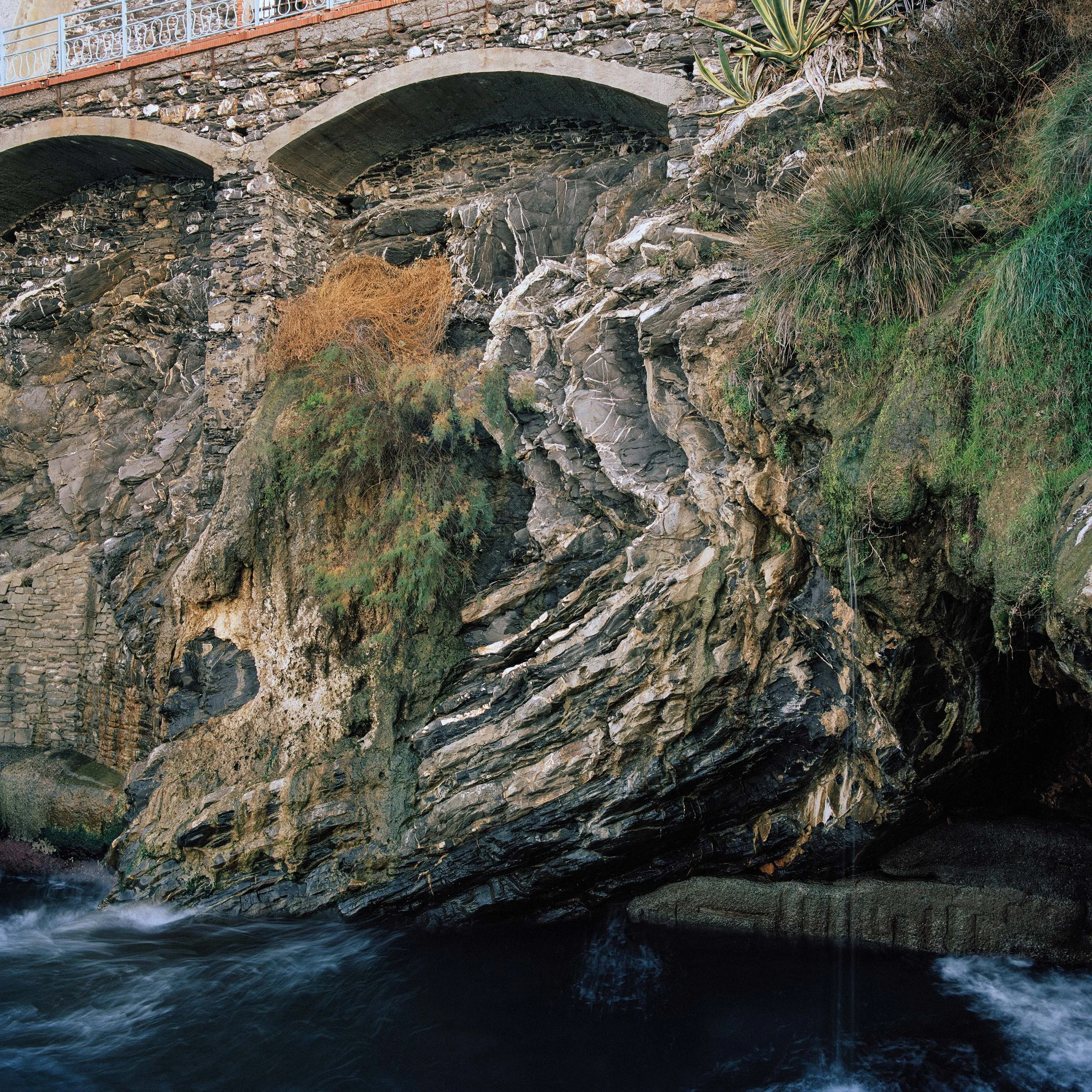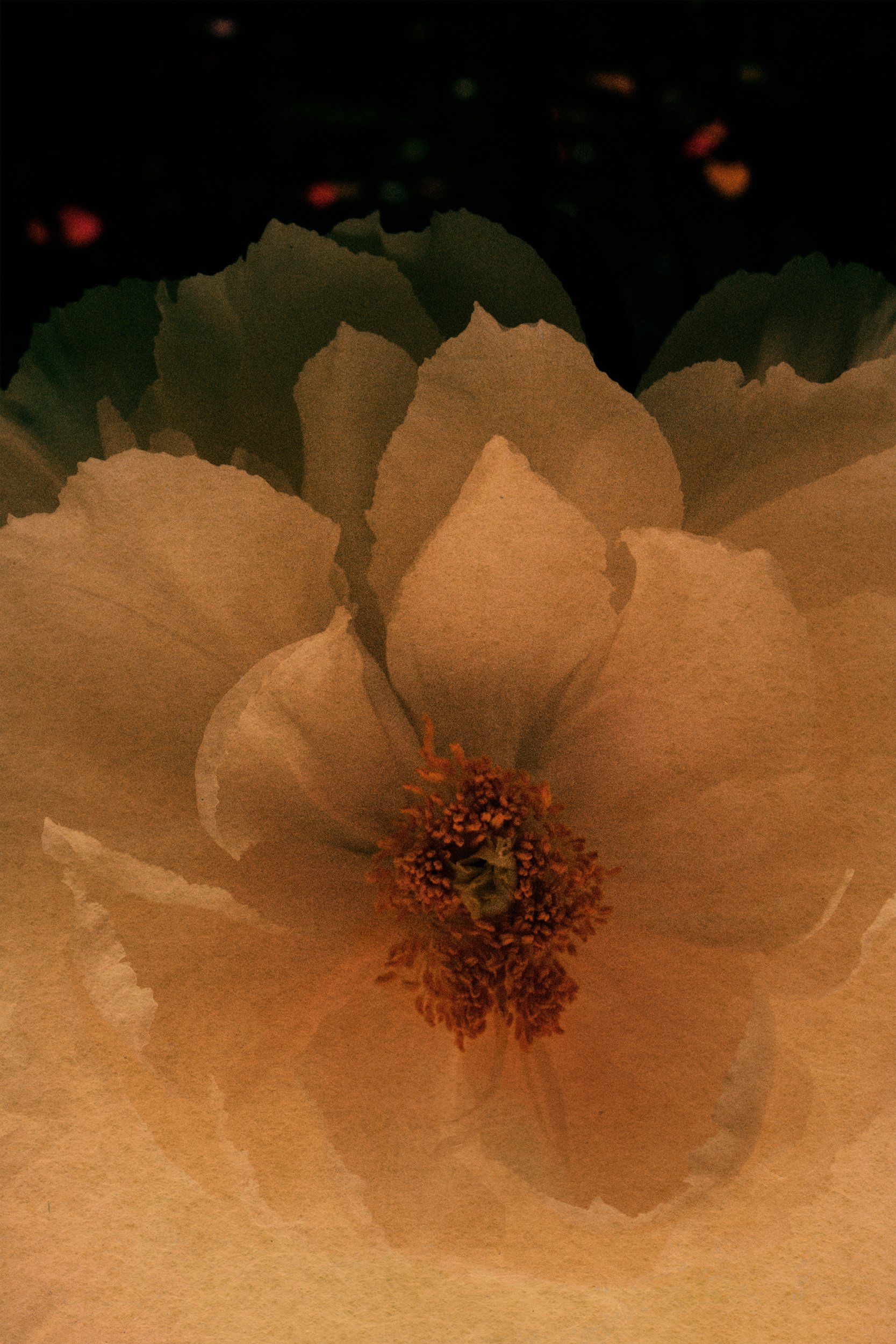
Zak van Biljon. Modernising Nature | Galerie 94 | Baden
Galerie 94 | Baden
28. August 2025
Einführung durch Gwendolyn Fässler, Kunsthistorikerin
Modernising Nature
Zak van Biljon
Autumn Forest Zurich, 2021 © Zak van Biljon
Der Fotograf Zak van Biljon kehrt in der Serie "Modernising Nature" Sehgewohnheiten um. Mittels Infrarotfotografie verwandelt er die Schweizer Bergwelt in leuchtend rote und pinke Landschaften und hinterfragt unser Verhältnis zur Natur und ihrer Abbildung in Zeiten allgegenwärtiger Social-Media-Filter.
Die Ausstellung "Modernising Nature" des Fotografen Zak van Biljon entfremdet den nostalgischen Blick auf die Schweizer Alpen. Anstelle von "dunkle[n] Tannen [und] grüne[n] Wiesen im Sonnenschein" erwarten das Publikum Bergwälder in leuchtendem Rot und Hochweiden in fluoreszierendem Pink. Nach einer anfänglichen Irritation über die ungewohnte Farbgebung entfalten die Bilder eine magnetische Anziehungskraft.
Die Herkunft dieses alternativen Farbspektrums liegt nicht in digitaler Manipulation, sondern in der Nah-Infrarotfotografie, einer Technik, die Zak van Biljon seit 2009 anwendet.Dieses Verfahren erfasst für das menschliche Auge unsichtbare Infrarotwellenlängen, die insbesondere von pflanzlicher Materie reflektiert werden. Dadurch verwandelt der fotografische Prozess alles, was in der Natur grün erscheint, künstlerisch in eine komplementäre Farbpalette. Van Biljon nutzt hierfür sowohl digitale Technologie als auch eine Handvoll seltener historischer Filmrollen aus dem frühen 20. Jahrhundert, die ursprünglich vor allem für militärische Aufklärung zur Anwendung kamen.
Diese "Falschfarbenfotografie" lädt zur Reflexion über die symbolische Bedeutung von Farben wie Rot, Magenta oder Violett ein. Sozialhistorisch sind diese mit Vorstellungen von Macht, aber auch von Verführung assoziiert, während sie in der Natur biologische Konzepte wie Lebenszyklen, Kraft und Vitalität ausdrücken. Die Wirkung der Farben bleibt dabei subjektiv, wie die Kuratorin Pamela Roberts festhält: "Wir alle sehen Farben unterschiedlich: mein Blaugrün ist vielleicht Grünblau für Sie".
In einer Zeit, in der "bis zur Unkenntlichkeit gefilterte Schnappschüsse von Bergseen und Blumenwiesen unsere Aufmerksamkeitsökonomie dominieren", hinterfragt van Biljon mit seiner Technik bewusst die Auffassungen von Künstlichkeit und Kitsch in der Landschaftsfotografie. Er fotografiert weltbekannte Ikonen wie das Matterhorn oder den Seealpsee und schafft so, im Gegensatz zu kosmetisch bearbeiteten Instagram-Bildern, direkte Zugänge zur naturbelassenen Schönheit. Der Blick wird entschleunigt, die gewohnte Sichtweise herausgefordert. So verschwimmen die Grenzen zwischen Mensch, Natur, Wissenschaft und Technologie im "kaleidoskopischen Infrarotkosmos von Modernising Nature", der nun auch erstmals in Buchform vorliegt.
Fading Light Zurich, 2024 © Zak van Biljon
Dans sa série « Modernising Nature », le photographe Zak van Biljon bouleverse nos habitudes visuelles. À l'aide de la photographie infrarouge, il transforme les montagnes suisses en paysages rouge vif et rose, remettant ainsi en question notre rapport à la nature et à sa représentation à l'ère des filtres omniprésents sur les réseaux sociaux.
L'exposition « Modernising Nature » du photographe Zak van Biljon déconstruise le regard nostalgique que l'on porte sur les Alpes suisses. Au lieu de « sapins sombres et de prairies verdoyantes sous le soleil », le public découvre des forêts de montagne rouge vif et des alpages rose fluo. Après une première irritation due à ces couleurs inhabituelles, les visuels exercent une attraction magnétique.
L'origine de ce spectre de couleurs alternatif ne réside pas dans la manipulation numérique, mais dans la photographie proche infrarouge, une technique utilisée par Zak van Biljon depuis 2009. Ce procédé capture les longueurs d'onde infrarouges invisibles à l'œil humain, qui sont particulièrement réfléchies par la matière végétale. Le processus photographique transforme ainsi artistiquement tout ce qui apparaît vert dans la nature en une palette de couleurs complémentaires. Van Biljon utilise à la fois la technologie numérique et une poignée de pellicules historiques rares du début du XXe siècle, initialement utilisées principalement pour la reconnaissance militaire.
Cette « photographie en fausses couleurs » invite à réfléchir sur la signification symbolique des couleurs telles que le rouge, le magenta ou le violet. D'un point de vue socio-historique, elles sont associées à des notions de pouvoir, mais aussi de séduction, tandis que dans la nature, elles expriment des concepts biologiques tels que les cycles de vie, la force et la vitalité. L'effet des couleurs reste subjectif, comme le souligne la conservatrice Pamela Roberts : « Nous voyons tous les couleurs différemment : mon bleu-vert est peut-être vert-bleu pour vous ».
À une époque où « des clichés de lacs de montagne et de prairies fleuries, filtrés jusqu'à en être méconnaissables, dominent notre économie de l'attention », van Biljon remet délibérément en question, à travers sa technique, les notions d'artificialité et de kitsch dans la photographie de paysage. Il photographie des icônes mondialement connues telles que le Cervin ou le lac Seealpsee et, contrairement aux visuels cosmétiquement retouchés d'Instagram, il crée ainsi un accès direct à la beauté naturelle. Le regard est ralenti, la vision habituelle remise en question. Ainsi, les frontières entre l'homme, la nature, la science et la technologie s'estompent dans le « cosmos infrarouge kaléidoscopique de Modernising Nature », désormais disponible pour la première fois sous forme de livre.
Spring reflection, Zurich, 2023 © Zak van Biljon
Il fotografo Zak van Biljon ribalta le consuetudini visive nella serie «Modernising Nature». Attraverso la fotografia a infrarossi, trasforma il paesaggio montano svizzero in paesaggi rosso vivo e rosa, mettendo in discussione il nostro rapporto con la natura e la sua rappresentazione in un'epoca in cui i filtri dei social media sono onnipresenti.
La mostra “Modernising Nature” del fotografo Zak van Biljon stravolge la visione nostalgica delle Alpi svizzere. Al posto di “abeti scuri e prati verdi illuminati dal sole”, il pubblico si trova di fronte a boschi di montagna di un rosso brillante e pascoli d'alta quota di un rosa fluorescente. Dopo un iniziale stupore per i colori insoliti, le immagini esercitano un fascino magnetico.
L'origine di questo spettro cromatico alternativo non risiede nella manipolazione digitale, ma nella fotografia nel vicino infrarosso, una tecnica che Zak van Biljon utilizza dal 2009. Questo processo cattura le lunghezze d'onda infrarosse invisibili all'occhio umano, che vengono riflesse in particolare dalla materia vegetale. In questo modo, il processo fotografico trasforma artisticamente tutto ciò che appare verde in natura in una tavolozza di colori complementari. Van Biljon utilizza sia la tecnologia digitale che una manciata di rari rullini storici dell'inizio del XX secolo, originariamente utilizzati principalmente per la ricognizione militare.
Questa “fotografia a falsi colori” invita a riflettere sul significato simbolico di colori come il rosso, il magenta o il viola. Dal punto di vista socio-storico, questi colori sono associati a concetti di potere, ma anche di seduzione, mentre in natura esprimono concetti biologici come i cicli di vita, la forza e la vitalità. L'effetto dei colori rimane soggettivo, come osserva la curatrice Pamela Roberts: “Tutti vediamo i colori in modo diverso: il mio blu-verde potrebbe essere verde-blu per voi”.
In un'epoca in cui “istantanee filtrate fino a renderle irriconoscibili di laghi di montagna e prati fioriti dominano la nostra economia dell'attenzione”, van Biljon, con la sua tecnica, mette consapevolmente in discussione le concezioni di artificialità e kitsch nella fotografia di paesaggio. Fotografa icone famose in tutto il mondo come il Cervino o il Seealpsee e, a differenza delle immagini cosmeticamente ritoccate di Instagram, riesce a creare un accesso diretto alla bellezza naturale. Lo sguardo rallenta, la visione abituale viene messa in discussione. Così, i confini tra uomo, natura, scienza e tecnologia si confondono nel “cosmo caleidoscopico a infrarossi di Modernising Nature”, ora disponibile per la prima volta anche in forma di libro.
Thinking of Japan, Zurich, 2022 © Zak van Biljon
Photographer Zak van Biljon turns our viewing habits upside down in his series ‘Modernising Nature’. Using infrared photography, he transforms the Swiss mountains into bright red and pink landscapes, questioning our relationship with nature and its representation in an age of ubiquitous social media filters.
The exhibition ‘Modernising Nature’ by photographer Zak van Biljon alienates the nostalgic view of the Swiss Alps. Instead of ‘dark fir trees [and] green meadows in the sunshine’, the audience is greeted by mountain forests in bright red and high pastures in fluorescent pink. After initial confusion about the unusual colour scheme, the visuals unfold a magnetic appeal.
The origin of this alternative colour spectrum is not digital manipulation, but near-infrared photography, a technique Zak van Biljon has been using since 2009. This process captures infrared wavelengths invisible to the human eye, which are reflected particularly strongly by plant matter. The photographic process thus artistically transforms everything that appears green in nature into a complementary colour palette. Van Biljon uses both digital technology and a handful of rare historical film rolls from the early 20th century, which were originally used primarily for military reconnaissance.
This ‘false-colour photography’ invites reflection on the symbolic meaning of colours such as red, magenta and violet. In a socio-historical context, these are associated with ideas of power, but also of seduction, while in nature they express biological concepts such as life cycles, strength and vitality. The effect of colours remains subjective, as curator Pamela Roberts notes: ‘We all see colours differently: my blue-green may be green-blue to you.’
At a time when ‘snapshots of mountain lakes and flower meadows filtered beyond recognition dominate our attention economy,’ van Biljon deliberately uses his technique to question perceptions of artificiality and kitsch in landscape photography. He photographs world-famous icons such as the Matterhorn or the Seealpsee lake and, in contrast to cosmetically edited Instagram images, creates direct access to natural beauty. The gaze is slowed down, the familiar perspective challenged. Thus, the boundaries between humans, nature, science and technology blur in the ‘kaleidoscopic infrared cosmos of Modernising Nature,’ which is now also available in book form for the first time.

















































































































































